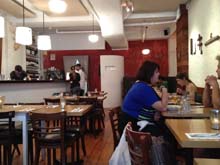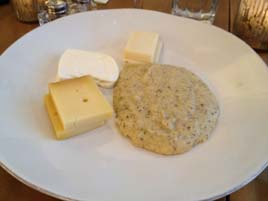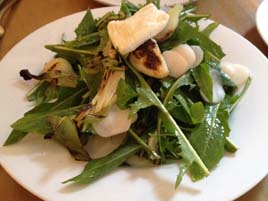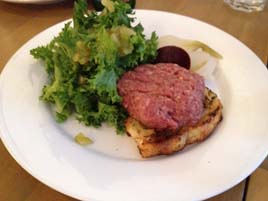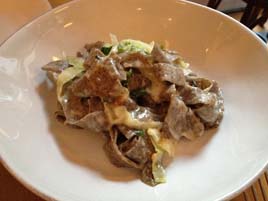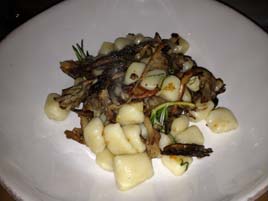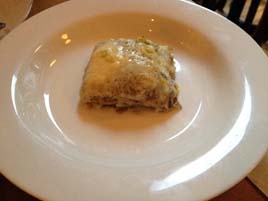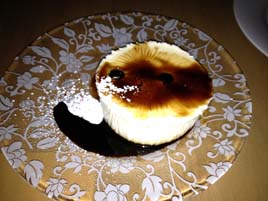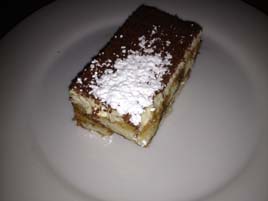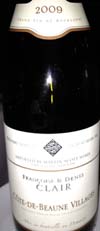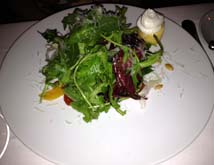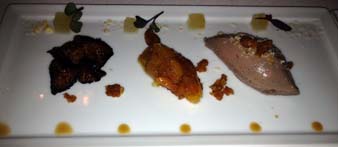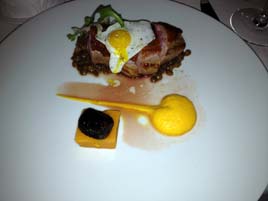Pier NYC on Roosevelt Island
 Saturday, July 28, 2012 at 04:13PM
Saturday, July 28, 2012 at 04:13PM

 Pier NYC offers a bit of summer fun, in a beautiful location with unbeatable Manhattan skyline views. The food isn’t bad, but it’s beside the point.
Pier NYC offers a bit of summer fun, in a beautiful location with unbeatable Manhattan skyline views. The food isn’t bad, but it’s beside the point.
Oh yeah: it’s on Roosevelt Island, which I’d never been to. It’s one of those spots that sounds a lot farther away than it is. You can get there on the F Train or via a four-minute ride on the Roosevelt Island Tramway, from Second Avenue and 59th Street.
The island wasn’t always so appealing. Formerly known as Welfare Island (and earlier, Blackwell’s Island), it once housed a penitentiary, a lunatic asylum, and a smallpox hospital. If New York had had a leper colony, it probably would have been there.
 It was converted to residential use in 1969, but was not reachable from the Manhattan side until the tram opened in 1976 and the subway arrived in 1989. (A bridge to Queens, opened in 1955, is the only vehicular route to the island; before that, there was an elevator to the Queensboro Bridge.) Originally dedicated to lower and mid-priced housing, recent construction on the island is considerably more upscale.
It was converted to residential use in 1969, but was not reachable from the Manhattan side until the tram opened in 1976 and the subway arrived in 1989. (A bridge to Queens, opened in 1955, is the only vehicular route to the island; before that, there was an elevator to the Queensboro Bridge.) Originally dedicated to lower and mid-priced housing, recent construction on the island is considerably more upscale.
All of which brings us to Pier NYC, new to the island this summer, from owners Jonathan Hoo, Salvatore Hoo, and Alfonso DiCioccio (pictured above left), who opened the nearby Riverwalk Bar & Grill in 2009.
I guess they wanted some foodie cred, so they brought in well known names to cater the place: Josh Bowen of John Brown’s Smokehouse for barbecue; David Santos of Um Segredo Supper Club for seafood; and Alyssa Gangeri of AllyCakes for desserts.
Catering, really, is what it is. The menu is short and inexpensive, and most of it is made elsewhere.


We were invited to an opening party at the publicist’s invitation. We were served a few finger-food samples from the regular menu, probably not enough to judge it fairly.


Neither of the two barbecue offerings floated my boat: smoked beef brisket (above left) and smoked turkey (above right), both served on lightly toasted white bread. The regular barbecue menu (pulled pork, lamb sausage, house-made pastrami) sounds more interesting.


A rock shrimp roll (normally $12; above left) was a lot more impressive. Order this. If you have room for dessert, the Red Velvet Whoopie Pie (normally $3; above right) is well worth a try.
The one thing they don’t have is a first-rate mixologist. The cocktails are strictly beach stuff, like mimosas, screwdrivers, margaritas, and daquiris, along with a basic list of sodas, beers, and wines.
Pier NYC isn’t a dining destination, but it’s the first Roosevelt Island dining venue I can recall to have received any mainstream media attention at all. That’s progress. But the views are really the attraction here.
Pier NYC (Slightly North of the F Train and the Tramway, Roosevelt Island)












